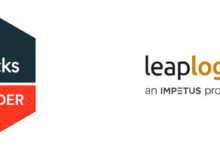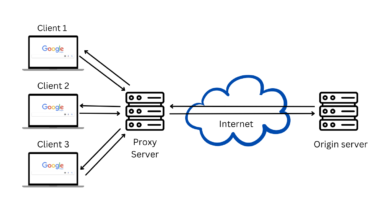
Teradata to Snowflake & ETL to Databricks Migration: Guide Powered by LeapLogic
Modernizing Teradata workloads and legacy ETL systems is becoming essential for organizations aiming to drive analytics, AI adoption, and cloud efficiency. Many enterprises are choosing Snowflake for cloud warehousing and Databricks for scalable ETL and AI workloads—but the complexity of migration often slows down progress.
This guide explains how enterprises can streamline this transformation using LeapLogic, an automated cloud transformation accelerator that simplifies, validates, and optimizes the migration journey.
Table of Contents
Why are enterprises migrating from Teradata to Snowflake?
Organizations are replacing Teradata with Snowflake to achieve:
1. Elastic scaling with zero tuning
Snowflake automatically manages performance, storage, and optimization—removing the need for Teradata-specific tuning.
2. Lower TCO & consumption-based cost model
Enterprises pay only for compute used and enjoy low-cost cloud storage.
3. Native AI & ML readiness
Features like Snowpark enable code-based transformations and ML pipelines natively within Snowflake.
4. Faster query performance
Micro-partitioning and automatic optimization often outperform traditional MPP workloads.
Why modernize legacy ETL on Databricks?
Moving ETL pipelines (Informatica, DataStage, SSIS, Talend, Ab Initio) to Databricks unlocks:
- Unified Lakehouse architecture
- Delta Lake ACID reliability
- Spark-based scale-out ETL
- Support for streaming, ML, and AI
- Reduced dependency on proprietary ETL runtimes
How LeapLogic accelerates Teradata → Snowflake and ETL → Databricks migration
LeapLogic applies automated assessment, transformation, and validation to reduce manual effort, minimize risk, and deliver faster outcomes.
Below is an breakdown of the modernization process with LeapLogic.
1. How does LeapLogic perform pre-migration assessment?
LeapLogic provides an automated, deep-dive analysis of:
- Teradata SQL, BTEQ scripts, macros & stored procedures
- ETL workflows, dependencies, and data lineage
- Data models, volumes, and SLAs
- Performance bottlenecks & optimization opportunities
Outcome: A detailed modernization blueprint with object inventory, compatibility insights, and migration complexity scoring.
2. How does LeapLogic convert Teradata SQL to Snowflake?
LeapLogic performs automated conversions for:
- Tables, keys, indexes, fallback structures
- Teradata-specific SQL (QUALIFY, OLAP functions, macros)
- BTEQ scripts to SnowSQL
- Stored procedures to Snowpark, SnowSQL, or external logic
Benefit: Up to 80–90% automated conversion, ensuring accuracy, best practices, and Snowflake-optimized SQL.
3. How does LeapLogic transform ETL to Databricks?
LeapLogic automatically rewrites legacy ETL logic into:
- PySpark or SparkSQL code
- Delta Lake transformations
- Reusable parameterized templates
- Optimized workflows orchestrated via ADF, Airflow, or Databricks Workflows
It infers business rules, joins, filters, expressions, lineage, and dependencies — reducing months of manual re-engineering.
4. How does LeapLogic validate the migrated code and data?
LeapLogic offers end-to-end automated regression testing, including:
- Row-level and column-level reconciliation
- Schema and metadata validation
- Business rule verification
- Parallel test runs against Teradata and Snowflake
- Dashboards for variances and quality metrics
This ensures trust, accuracy, and reliable cutover.
5. How does LeapLogic optimize the target environment?
Snowflake Optimization
- Auto-tunes micro-partitioning
- Recommends warehouse sizing
- Applies Snowflake best practices to queries
Databricks Optimization
- Optimized Delta Lake tables & file paths
- Z-Ordering, caching, and cluster recommendations
- Performance-tuned PySpark pipelines
6. How does LeapLogic enable zero-disruption cutover?
- Automated switchover planning
- Versioned code deployment
- Synchronization of late-arriving data
- Co-existence support for parallel runs
- Observability across Snowflake and Databricks
This significantly minimizes downtime and ensures a smooth transition.
What benefits do enterprises achieve with LeapLogic?
Up to 80–90% automation of SQL & ETL conversion
Up to 40–70% faster modernization timelines
50–80% reduction in migration risk
AI-ready Snowflake + Databricks architecture
Lower cloud TCO and faster time-to-value
Trusted validation through automated testing
FAQs
Q1. Why use LeapLogic for Teradata to Snowflake migration?
LeapLogic automates SQL conversion, object mapping, optimization, and validation—reducing manual effort dramatically and ensuring accuracy.
Q2. Can LeapLogic handle complex Teradata stored procedures?
Yes. It parses and converts nested, cursor-based, macro-heavy logic into Snowflake-compatible equivalents.
Q3. How does LeapLogic migrate legacy ETL to Databricks?
It extracts business logic, rewrites transformations into scalable PySpark/SparkSQL, and auto-generates Delta-native pipelines.
Q4. Does LeapLogic support parallel modernization of DW and ETL?
Yes. It supports multi-lane migration, enabling warehouse and ETL modernization in parallel to speed up transformation.
Q5. Can LeapLogic migrate both batch and real-time ETL?
Yes. It supports streaming ingestion, Delta Lake transformations, event-driven pipelines, and ML integrations.
Conclusion
Migrating from Teradata to Snowflake and modernizing ETL on Databricks delivers huge performance, cost, and AI readiness benefits. With LeapLogic’s automated assessment, conversion, and validation, enterprises achieve faster modernization with lower risk and higher accuracy—unlocking a future-proof, cloud-native analytics foundation.








